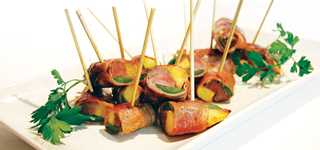Great Backyard Bird Count a fun,
worthy mid-winter activity

By Mark Nale
My brother Paul visited my Bald Eagle Valley home one day last
winter. We were just sitting in the dining room having a cup of coffee.
Birds flitted in and out from the bird feeders on my deck — just a few
feet from the sliding glass doors and the table where we were seated.
We sipped hot java, shared warm conversation and watched the birds interacting outside on the cold deck.
"You know, I think that I could be entertained all day just sitting here watching the birds," Paul commented.
Although I am a busy person, I spend a good bit of time doing just
that — watching the birds. It has been so cold since Christmas that
sitting inside with a mug of coffee has often seemed like an excellent
idea.
Not only do I watch the birds for pleasure, I count and record my observations. I also like to photograph my feathered friends.
Beyond the counting are the other interesting bird interactions that I
get to experience. Just last week, I watched a female hairy woodpecker
pecking at suet in a cage feeder. A female red-bellied woodpecker landed
below the hairy, but the hairy did not budge. The next thing I knew,
the red-belly jabbed her pointy beak into the side of the hairy
woodpecker and the feathers flew. Not surprisingly, the hairy woodpecker
flew off to allow the red-belly to feed.
I record my counts for Project FeederWatch on eBird and my
observations in a journal. Besides being fun for me, this data is
valuable to ornithologists and can be used in many ways. What Cornell
Lab of Ornithology terms "citizen-science" data has been used in
numerous scientific papers. The data documents the rapid southerly
movement of irrupting species, such as pine siskins this winter, as well
as the long-term population shift of Carolina wrens and red-bellied
woodpeckers northward.
You can join in on the counting and citizen science during this
winter's Great Backyard Bird Count, to be held Feb. 16-19. According to
Cornell University, the mid-February timing is selected to coincide with
the time when North American bird species are at their southernmost
extent.
The combined efforts of birders from all over the world will provide a
snapshot of bird populations during those four days. That data will
help researchers at the Cornell Lab of Ornithology and the National
Audubon Society learn more about how different species of birds are
faring in our changing environment.
The Great Backyard Bird Count continues to grow. In 2015, just over
143,000 volunteers tallied 5,090 species, and in 2017, more than 210,000
participants from more than 140 different countries submitted bird
counts. It was the most detailed four-day snapshot of world-wide bird
populations ever collected, with counters reporting 5,940 different
species. The top five reported birds were the northern cardinal,
American crow, mourning dove, dark-eyed junco and the downy woodpecker.
Things to watch for in this year's Great Backyard Bird Count will be
the extent of the southern movement of siskins, as well as red and white
crossbills. It will be interesting to see how this February's pine
siskin count compares to 2015. That year, participants counted a record
171,312 pine siskins, compared to only 13,431 in 2014. And this appears
to be another big year for the normally Arctic-living snowy owls. You
could be lucky and spot one of these magnificent birds.
Participating in the count is free, it's fun and anyone can help. The
GBBC welcomes birders of all ages and all degrees of expertise. All you
need to do is count birds for 15 minutes or more during one or more of
the four count days and report your findings online at www.birdcount.org.
Although the event is called the Great Backyard Bird Count,
participants are welcome to count at a park, a state game land or
anywhere they wish. Information about the GBBC can be found online and
at gbbc.birdsource.org — you can type in a zip code or the name of a park and they will customize printable tally sheets just for that location.
"These types of activities provide the citizen-scientist with an
opportunity to help wildlife," Game Commission biologist Doug Gross
stated. "Anyone who can identify even a few species can contribute to
our knowledge (about) the occurrence and abundance of birds in winter."
If you are looking for a different mid-winter family activity, the
Great Backyard Bird Count is a way to involve everyone in an important
conservation effort. It even has an accompanying photo contest. Not only
is it free, easy, and fun, but your efforts — however large or small —
will help ornithologists and all of us learn more about birds.








